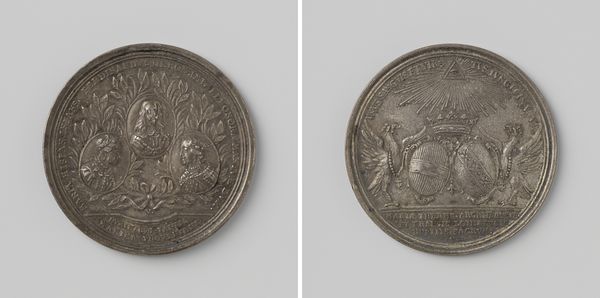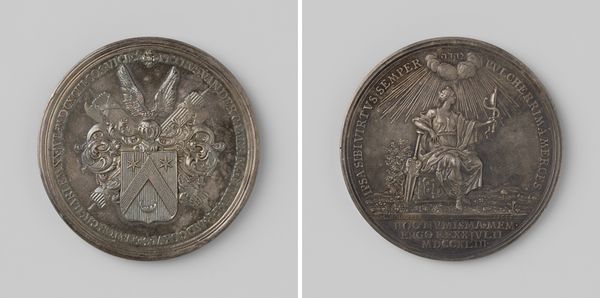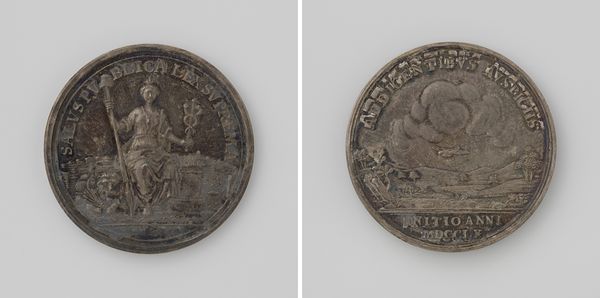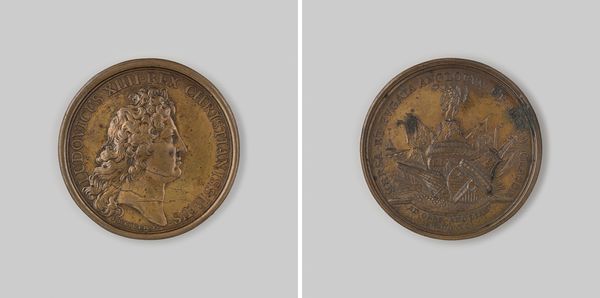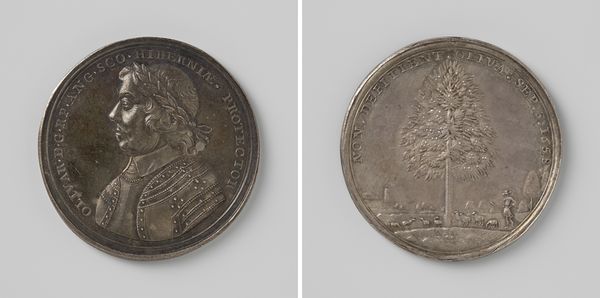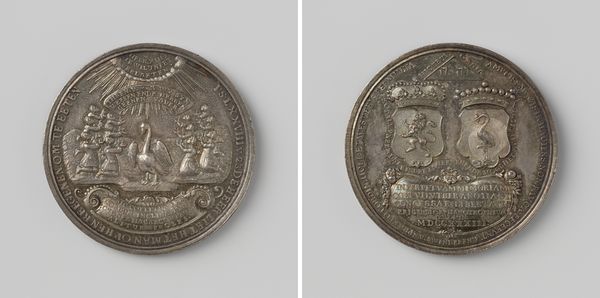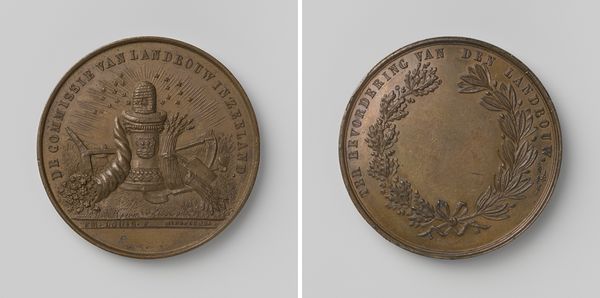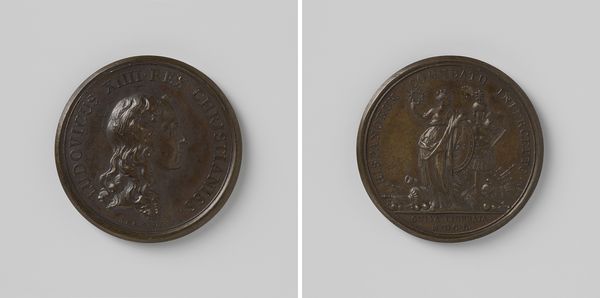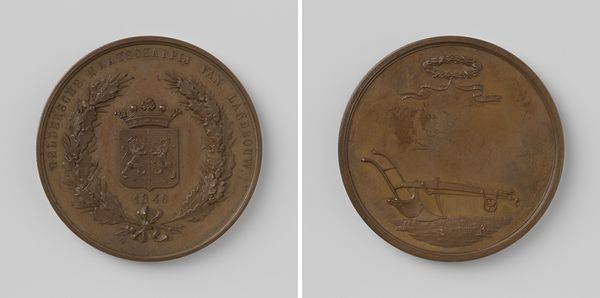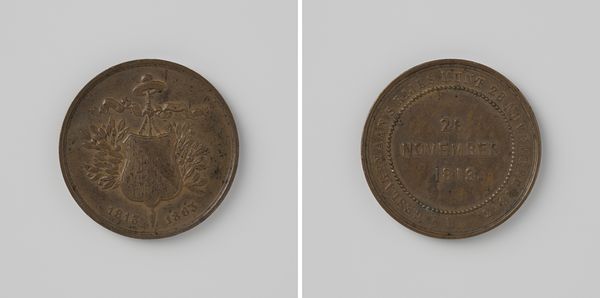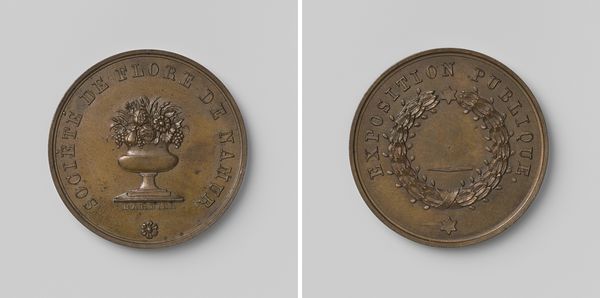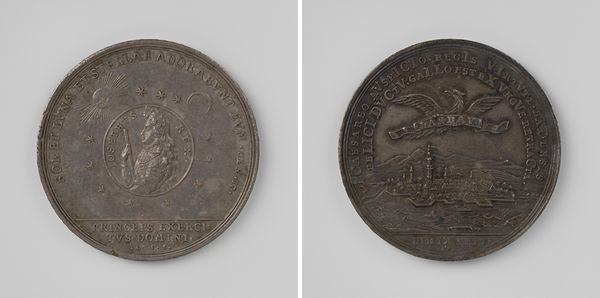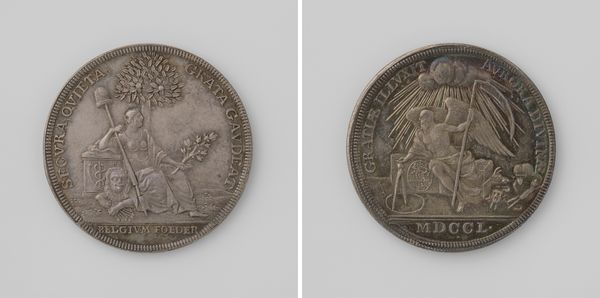
metal, relief, bronze, sculpture, engraving
#
neoclacissism
#
metal
#
sculpture
#
relief
#
bronze
#
sculptural image
#
sculpture
#
history-painting
#
engraving
Dimensions: diameter 4.1 cm, weight 32.28 gr
Copyright: Rijks Museum: Open Domain
This bronze medal commemorating the Outbreak of the Belgian Revolution was made by Adrien Hippolyte Veyrat sometime in the 19th century. The bronze gives the medal a sense of weight and permanence, befitting its subject matter. This isn't painting or drawing, of course; it’s a work of die-striking. This is a highly skilled process that requires the artist to first carve the design into a hardened steel die. That die is then used to stamp the image onto the metal. The sharp, precise lines and crisp details, like the lion’s mane and the rising sun, speak to the level of craftsmanship involved. But beyond just technique, think about what the choice of this medium implies. Medals like this weren’t made by hand using traditional methods, but mass-produced. In other words, it's a symbol that could be widely distributed, reflecting the revolutionary fervor of the time and the desire for broad participation in the movement for Belgian independence. The medal is a reminder that even small, seemingly insignificant objects can carry immense social and political weight.
Comments
No comments
Be the first to comment and join the conversation on the ultimate creative platform.
